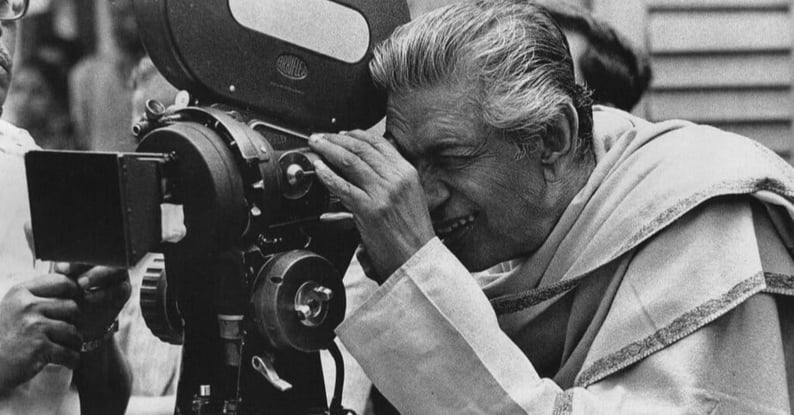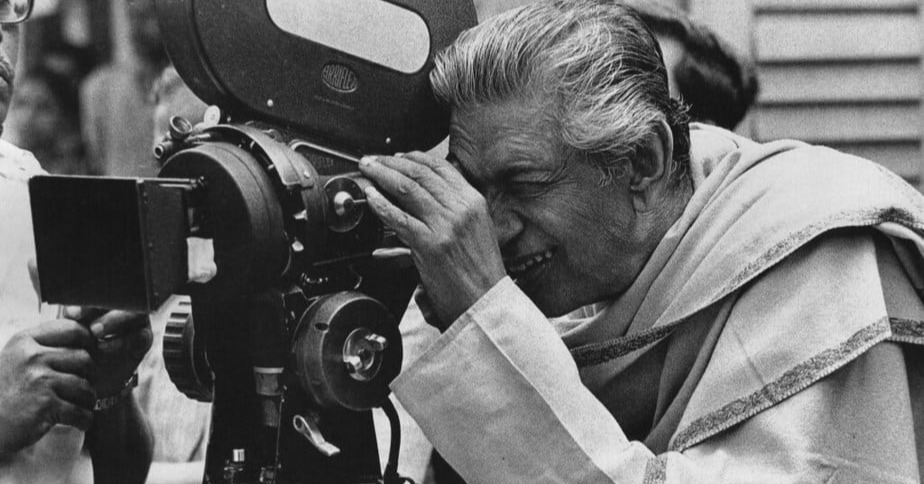How AI Voice Cloning Technology Helps Film Studios Restore Old Movies

Film preservation and the process of restoration refer to the practice of safeguarding and maintaining films, both physical and digital, for future generations. The goal is to prevent the deterioration of films by ensuring their accessibility and longevity. AI character voice generation, along with the contributions of voice actors, plays an integral role in the preservation process.
But what does the process of preservation look like today? And how do AI technology and voice cloning help film studios restore old movies? Keep reading to find out.
The vital role of studio archives and collection department
Studios hoard a ton of stuff, like scripts, pics, videos, and more, that show how their productions came to be. It's like a backstage pass to the creative process.
Then there's the collection department, who's all about grabbing and organizing physical artifacts from the studio's history to include recorded performances of notable voice actors. You know, like cool costumes, props, and sets. It's like a museum, but for movie nerds.
Together, the archives and collection department play a crucial role in preserving the studio's legacy, ensuring that the voices of talented voice actors resonate through time, and making it accessible to researchers, scholars, and fans. They also provide valuable resources for filmmakers and other creative professionals who may be looking for inspiration or are looking to learn from the studio's past successes and failures.
Challenges in film preservation
Preserving films can be tough, but it's super important to save cinematic history! Here are some of the main challenges:
- Deterioration. Film reels can degrade over time, leading to the loss of valuable historical material.
- Technological obsolescence. As technology advances, older formats and equipment become obsolete, making it hard to access and transfer older films.
- Limited resources. Film preservation can be expensive and require specialized equipment and skilled personnel.
- Lack of awareness. Many people don't realize the importance of film preservation, which can lead to films being lost or destroyed.
Despite these challenges, new technologies like speech synthesis offer exciting possibilities for improving film preservation. Speech synthesis is vital for preserving original spoken dialogues and narrations in films, contributing to a comprehensive preservation effort beyond visual elements. This ensures faithful retention of treasured actors’ voices captured in AI-generated form for future generations.
How to restore old movies with AI technology
AI technology is now able to restore and improve the quality of older films through AI generated voices. The process typically proceeds through a few key steps:
- Digitization. First, the film is scanned to create a digital copy that can be worked on with AI technology.
- Noise reduction. AI algorithms, like those used for voice AI, are used to remove any visual noise or artifacts caused by the original filming or digitization process.
- Color correction. AI analyzes the color data to restore the original color palette, which may have faded over time.
- Upscaling. AI upscales the image to a higher resolution, improving the clarity and detail.
- Frame interpolation. AI adds additional frames to create a smoother and more natural-looking image.
- Restoration. The final step involves removing any remaining imperfections or artifacts to create a crisp and clean final product.
It's worth mentioning that AI technology, with its multifaceted applications like AI generated voices is amazing for restoring old movies, but it's not a one-size-fits-all solution. A team of skilled professionals is needed to make sure the restored movie stays true to the original.
How can archive departments benefit from voice cloning technology?
When setting out to restore an old film, one of the most common setbacks is the deterioration of audio quality over time.
Voices may be muffled or distorted, making it difficult for viewers to understand what is being said. In some cases, the original voice actor may no longer be available to re-record the dialog. Voice cloning technology can help overcome these challenges by creating a digital copy of the original actor's voice.
This is where voice cloning steps in to aid film archive departments in a variety of ways:
Restoration of degraded audio. Old films often have audio tracks that have degraded over time, resulting in unclear dialogue or unfamiliar sounding voices. But now, voice cloning technology can help restore and improve the original audio quality, leading to an enhanced viewing experience for audiences.
One such technology is Respeecher, which uses AI to analyze the audio signals of a recording and separate them into different components such as speech, background noise, and others. The AI model then processes these components separately, using various techniques to enhance each one.
For instance, if the speech in a recording is muffled or distorted, Respeecher can use algorithms to remove unwanted noise and improve speech clarity. Similarly, if a recording has missing frequencies or gaps in the audio, Respeecher employs machine learning techniques to synthesize the missing data and create a more complete and accurate sound.
Resurrecting voices from the past. By restoring the voices of people from the past, voice cloning is essentially creating a digital copy of their voice. To do this, an AI model is trained on a large dataset of samples for that person's speech, achieving AI character voice generation. . These can be anything from recordings of interviews, speeches, or other public appearances. The AI model then analyzes the person's voice patterns, intonations, and other characteristics, and uses this information to create a synthetic voice that closely resembles the original.
This process, enhanced by recent advancements in voice AI, is capable of recreating the voice of someone who is no longer alive or who is otherwise unable to speak, such as individuals with speech impairments. Furthermore, the integration of speech synthesis technology can refine the nuances of the recreated voice, ensuring a more natural and authentic reproduction.
Accessibility for hearing-impaired audiences. Voice cloning technology is used to create subtitles or closed captions that are more accurate and easier to understand for hearing-impaired audiences. By improving the audio quality of an original recording, voice cloning makes the process of creating accurate transcriptions easy.
Overall, voice AI technology helps film archive departments preserve and enhance aging audio recordings, and improve accessibility for audiences.
Contact the Respeecher team to demo the capabilities voice cloning delivers to film studios today.
FAQ
Preservation of film refers to film preservation that involves protecting and conserving digital films as well as film. It does away with the problem of film degradation and technological obsolescence and incorporates AI technology to achieve preservation processes such as AI character voice generation for actors and Voice AI for the restoration of sound.
AI technology is at the forefront of film preservation as it improves speech synthesis, reconstructs degraded audio, and image quality. Voice cloning and AI voice restoration technologies provide assurance that original voice performances are well preserved so legendary voices can be brought to future generations of audiences.
Restoration of vintage movies is hindered by physical media decay, technological obsolescence of the extinct media, and limited budgets. Advances in technology on AI such as voice cloning and speech synthesis open up new avenues for audio restoration and image aspects of old movies.
Voice cloning technology improves low-quality audio by eliminating digital imprints of the original voice so that movie studios can restore muffled or fuzzy dialogue. Respeecher utilizes AI voice restoration to eliminate noise, enhance clarity, and give voices new life so that old recordings sound natural again.
Respeecher also leads in digital film restoration with its AI technology for the restoration of audio degradation. Voice cloning with its technology makes it possible to recover lost dialogue and voices of the past to be reconstructed, thereby enhancing overall restored film quality and historical authenticity guaranteed.
AI technology improves deaf viewers' subtitles by allowing transcriptions to be more readable and accurate. Speech synthesis and Voice AI are used to produce accurate captions, therefore allowing the viewers to understand dialogue even if the original audio is muffled or damaged.
AI character voice generation involves training large speech corpora with AI technology so that they imitate voices. This voice cloning and speech synthesis process implies the AI generates computer-generated versions of characters' voices, allowing directors to record true dialogue for animation characters, departed personalities, or departed actors no longer present.
Yes, voice cloning is also able to bring back the voice of passed-away historical figures from recordings that they left behind. AI technology uses such points of reference to provide a voice that is almost identical to the real one and this can be used for voice development of AI character voice generation in movies and Generative AI in film and documentaries even if the individual has died.
Glossary
Digital Film Restoration
Voice Cloning
Speech Synthesis
Generative AI in film
AI voice restoration

- artificial intelligence
- synthetic speech
- artificial intelligence (AI)
- synthetic voices
- speech synthesis
- AI voice
- voice cloning software
- AI voices
- voice conversion technology
- actor
- voice actors
- Respeecher’s synthetic voices
- audio effects
- AI technology
- collection department
- Film preservation
- film studios
- restore old movies
- AI generated voice
- Respeecher for Business
- Film and Animation
- voice ai
- AI character generator
- AI character voice generation





